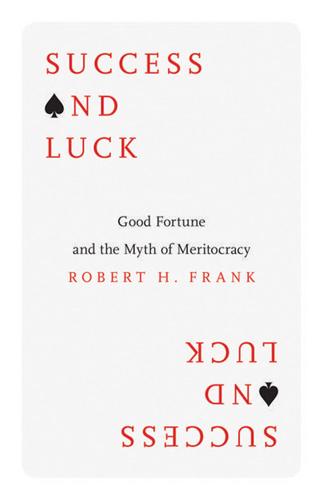
Success and Luck: Good Fortune and the Myth of Meritocracy
by
Robert H. Frank
Published 31 Mar 2016
Roy Baumeister, quoted by Kirsten Weir, “The Power of Self-Control,” Monitor on Psychology 43.1 (January 2012): 36. 16. K. Anders Ericsson, Ralf Krampe, and Clemens Tesch-Romer, “The Role of Deliberate Practice in the Acquisition of Expert Performance,” Psychological Review 100.3 (1993): 363–406. 17. Attribution theory in psychology attempts to explain how people use information to arrive at causal explanations for events. 18. Bernard Weiner, Achievement Motivation and Attribution Theory, Morris-town, NJ: General Learning Press, 1974. 19. Daniel H. Robinson, Janna Siegel, and Michael Shaughnessy, “An Interview with Bernard Weiner,” Educational Psychology Review (June 1996): 165–74. 20. Jasmine M.
…
If you’re focused on luck’s importance, you may be more likely to think of excuses to avoid that effort and instead hope that fate will intervene on your behalf. So if believing that talent and effort are all that matter makes it easier to tackle difficult tasks, then denying luck’s importance may be adaptive. The findings of attribution theory in psychology offer additional support for the possibility that denying luck’s role in success may spur additional effort.17 It’s been shown, for instance, that students are more likely to persist with difficult academic tasks if they view any resulting success as having stemmed primarily from their own abilities and efforts.18 Given that high ability is a persistent personal trait, such beliefs encourage continued hard work in the future.
…
B., 73 Alou brothers, 33 American Dream, the, 4, 145 American Economic Association, 25 American Economic Review, 28, 126, 133, 171 American Enterprise Institute, 127, 171 American Society of Civil Engineers, 87 Anderson, Chris, 47 antlers in bull elk, 116–18, 118 Apotheker, Léo, 53 Apple, 44, 49, 132 Arab Spring, 107 Archilla, Gustavo, 106 artificial intelligence, 70 attention scarcity, 48–49 attribution theory, 77 austerity policies, 134 availability heuristic, 79, 80 baby boomer retirements, 97, 127, 167 Baker Library, 36 Bartlett, Bruce, 90 Bartlett, Monica, 101 Baumeister, Roy, 75 Beatty, Warren, 23 behavioral economics, 69, 70, 96 Bernanke, Ben, 133–35 best seller, xiii, 45 Betamax, 44, 45 birth order effects, 32 birth-date effects: in hockey, 38; in the workplace, 38 Blackstone, 103 Blockbusters, 48 Bloomberg Business, 132 Bonaparte, Napoleon, 7 Boudreaux, Donald, 122 Breaking Bad, 24, 31, 68 British accent, 4 Broderick, Matthew, 24, 68 Brooklyn Dodgers, 142 Brooks, David, 83, 84 Buffett, Warren, 12, 39 Bush, George H.
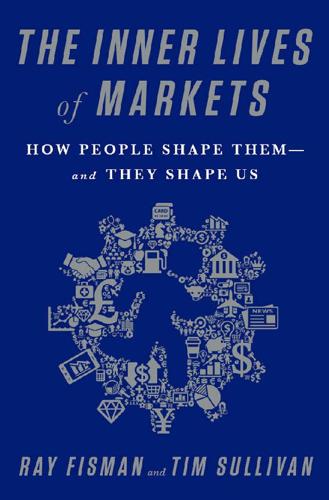
The Inner Lives of Markets: How People Shape Them—And They Shape Us
by
Tim Sullivan
Published 6 Jun 2016
And competition itself, part of the life-blood of how markets work, not only drives away profits but can drive out concerns of morality and compassion that may come to be seen as an unaffordable indulgence. Markets Can Make Us Selfish In 1977, Stanford psychologist Lee Ross and some colleagues published a landmark article on attribution theory, which is “concerned with the attempts of ordinary people to understand the causes of the events they witness. It deals with the ‘naïve psychology’ of the ‘man in the street’ as he interprets his own behaviors and the actions of others.” Ross’s central question was, How do we ordinary people judge why others appear selfish or generous, cheerful or grumpy, docile or aggressive?
…
INDEX Abidjan, Ivory Coast, 167–168 Adfibs.com, 69 adverse selection, 48, 51–55, 57, 59 advertising, as money burning, 70–71 Super Bowl advertising, 70–71 AdWords, 14, 101 Airbnb, 3, 6, 50, 109, 125, 170–172 Akerlof, George, 43–51, 58–59, 64, 112 Alaskoil experiment, 55–57, 58–59 algebraic topology, 44–45 Amazon, 2, 3, 16, 50, 51, 52, 59, 74, 91, 95, 97, 108, 110, 119, 126, 128–129 American Express, 115–116 America’s Second Harvest, 154–160 Amoroso, Luigi, 21 Angie’s List, 120 “animal spirits,” 50 applied theory in economics, 45, 50, 75–76 Arnold, John, 156–158, 160 Arrow, Kenneth, 30–34, 36–37, 40, 76, 117, 180 ascending price English auctions, 83, 100 asymmetric information, 41, 44–55 attribution theory, 177–178 auctions AdWords, 14, 101 auction theory, 82–84 coat hooks, 151–152, 174 design, 14, 101–102 first-price sealed-bid, 86–87, 99–100 first-price (live), 84 internet, 94–97 types of, 81–82 wireless spectrum, 102–103 See also eBay; Vickrey auctions AuctionWeb, 40 Ausubel, Larry, 98 Azoulay, Pierre, 112 Bank of America, 113–115 barriers to entry, in marketplace, 173 baseball posting system, 79–81 Bazerman, Max, 55–57 Becker, Gary, 35, 161–162 Berman, Eli, 67 Berners-Lee, Tim, 41–42 Big Data, Age of, 15 Blu-ray-HD DVD format war, Sony, 125–126 Book Stacks Unlimited, 42–43 Boston public schools, 144–149 Boston University MBA students experiment (Bazerman and Samuelson), 55–57, 58–59 See also Alaskoil experiment bridge design, 141–142 Brown, William P., 83–84 Brownian motion, 28–29 cab drivers, Uber vs., 169–170, 172 Camp, Garrett, 170 candle auctions, 82 capitalism, free-market, 172–173 car service platform, 169–171 cash-back bonus, 116 cash-for-sludge transactions, 167–169 See also Summers, Larry centralized clearinghouses, 140–141 Champagne fairs, 105–106, 126–128 Changi POW camp, 175–177 Le Chatelier, Henry Louis, 29 Le Chatelier’s principle, 29 cheap talk, 62–66, 69 chess, difference between Cold War and, 26 See also poker, bluffing in child labor, 180 cigarettes, as currency in German POW camp, 8–9 Clarke, Edward, 93 Clavell, James, 175 clerkship offers, with federal judges, 140 coat hook, 151–152, 174 Codes of the Underworld (Gambetta), 68 Cold War, difference between chess and, 26 See also poker, bluffing in Collectible Supplies, 128–129 “College Admissions and the Stability of Marriage” (Gale and Shapley), 137 commitment, signs of, 62–63, 69–71, 72–75 community game, 178–179 competition models of, 35, 166, 172–173 platform, 124–126 unethical conduct with, 180–181 “Competition is for Losers” (Thiel), 173 competitive equilibrium, existence of, 29, 31–34, 36–37, 40, 45, 76 competitive markets, 35, 124–126, 172–174, 180–181 See also platforms competitive signaling, 70–71 congestion pricing model, 86, 94 constrained optimization, 85–86, 133 contractorsfromhell.com, 120 copycat competitors, 172–173 corporate philanthropy, 72–75 Cowles, Alfred, 25, 27 Cowles Commission for Research in Economics, 25, 27, 31, 134 “creative destruction,” 50 credit card platforms, 113–116, 123–124 criminal organizations, informational challenges of, 68 currency, at Stalag VII-A POW camp, 8–9 customer feedback, 52, 74–75 Davis, Harry, 154, 157 Debreu, Gérard, 20, 24, 25, 32–33, 36–37 decentralized match, 139–140 deferred acceptance algorithm, 137–141, 145–149 Delmonico, Frank, 164 descending price auctions, 81–82 design, auction, 14, 101–102 Digital Dealing (Hall), 94 Discover card, 115–116 distribution of income, 22 Domar, Evsey, 36–37 Dorosin, Neil, 142–144 Douglas Aircraft Company, 25 Dow, Bob, 1–2 Dow, Edna, 1–2 Drèze, Jacques, 85–86 dumping toxic waste, transactions for, 167–169 Dutch auctions, 81–82 dysfunction, market, 36, 75–77, 143 eBay adverse selection on, 51–55, 57 auction listings, 94–97 concerns on model for, 43, 46, 48 on seller motivation for giving to charities, 73–75 start of, 39–41 as two-sided market, 109, 119 e-commerce, 41–43, 52–55 “The Economic Organization of a P.O.W.

The Confidence Game: The Psychology of the Con and Why We Fall for It Every Time
by
Maria Konnikova
Published 28 Jan 2016
Eight years later, Marie Jahoda, one of the earliest pioneers of positive psychology and empirical research into the foundations of mental health—she was a founding director of NYU’s Research Center for Human Relations—defined the healthy psyche as one that could perceive the self as it is in reality, without skewing it to fit a particular image or desire. Accurate perception of reality was one of the six criteria she put forward for full mental health. And in 1967, Harold Kelley, a psychologist who was one of the originators of attribution theory, or the theory of how we ascribe causes to different events, agued that humans were like naïve scientists, striving for truth through unbiased, systematic research. Accurate perceptions, he wrote, made us function at our most effective. Starting in the 1970s, though, that emphasis on accuracy started to shift.
…
INDEX AARP ref1, ref2, ref3 Abagnale, Frank ref1 Abbas, Ali ref1 Aberle, Peter ref1 academia ref1 Acker Merrall and Condit ref1 affect heuristic ref1 AIDS ref1 airfare ref1 Albright, Linda ref1 alpha ref1 Alterman, Tyler ref1 Ammon, Robert ref1, ref2 Anastasia, Countess ref1 anchor effects ref1 Andrade, Jimmy ref1 Anfam, David ref1, ref2 Antony and Cleopatra (Shakespeare), ref1, ref2 ants ref1 anxiety ref1 approach-avoidance model ref1 Arkes, Hal ref1 Armstrong, Lance ref1 art fraud ref1, ref2 Rosales in ref1, ref2, ref3, ref4, ref5, ref6, ref7, ref8 Arthur, Harold ref1, ref2 Asahi Shimbun, ref1 Ashkin, Julius ref1 attentional focus ref1 attribution theory ref1 Auster, Paul ref1 authority ref1, ref2, ref3 Axelrod, Robert ref1 Azzopardi, Bruce ref1 Azzopardi, Samantha Lyndell ref1, ref2, ref3 as human trafficking victim ref1, ref2, ref3, ref4, ref5 Baby Jessica ref1 Bacon, Francis ref1, ref2 Bailey, William ref1 Bailly, Jean ref1 bait and switch ref1 Baker, Richard Brown ref1 Banbury, Jen ref1 Barbero, Francesca ref1 Bar-Hillel, Maya ref1 Barnum, P.

100 Plus: How the Coming Age of Longevity Will Change Everything, From Careers and Relationships to Family And
by
Sonia Arrison
Published 22 Aug 2011
A good discussion of Henri Tajfel’s social identity theory can be found in Roger Brown, Social Psychology (New York: Macmillan, 1986), 584–585. 68 McPherson, Smith-Lovin, and Cook, “Birds of a Feather.” 69 A good general discussion of this phenomenon can be found in Martha Augoustinos and Iain Walker, Social Cognition (London: Sage, 2006). Of particular interest are chapter 3, on the essentials of attribution theory, and chapter 9, which applies this to understanding how we interpret both our own groups and others. 70 Ian Rankin, A Question of Blood (London: Orion Books, 2003), 284–285. 71 Peter Carruthers, “Multiple Memory Systems,” in The Architecture of the Mind, ed. Peter Carruthers (Oxford, UK: Blackwell, 2006), 120–130. 72 E.
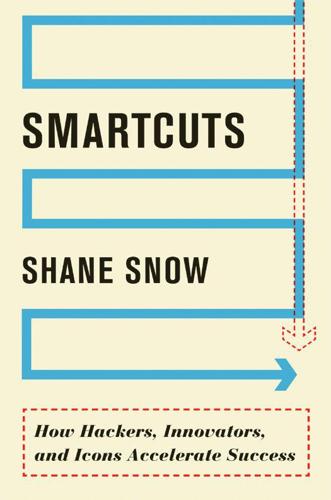
Smartcuts: How Hackers, Innovators, and Icons Accelerate Success
by
Shane Snow
Published 8 Sep 2014
But every doctor fails sometimes. Seasoned physicians learn to become mentally and emotionally immune to it. They learn to live with the reality that some patients don’t survive. Staats concluded that this coping mechanism was itself responsible for the paradox. He and his colleagues called this attribution theory. The theory says that people explain their successes and failures “by attributing them to factors that will allow them to feel as good as possible about themselves.” Remember what the Startup Funeral founders said? “We ran out of money.” “People didn’t want it.” “The ‘gray hairs’ had no plan.”
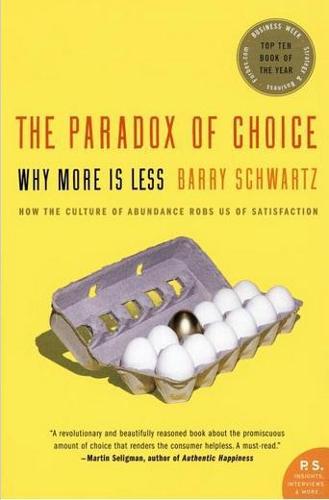
The Paradox of Choice: Why More Is Less
by
Barry Schwartz
Published 1 Jan 2004
in which two sets of participants S. Iyengar and M. Lepper, “When Choice Is Demotivating: Can One Desire Too Much of a Good Thing?” Journal of Personality and Social Psychology, 2000, 79, 995–1006. Even decisions as trivial For a discussion of self-blame and self-esteem, see B. Weiner, “An Attributional Theory of Achievement Motivation and Emotion,” Psychological Review, 1985, 92, 548–573. their importance to the verbalizer The jam study is from T.D. Wilson and J.S. Schooler, “Thinking Too Much: Introspection Can Reduce the Quality of Preferences and Decisions,” Journal of Personality and Social Psychology, 1991, 60, 181–192.

You Are Not So Smart
by
David McRaney
Published 20 Sep 2011
Instead of saying, “Jack is uncomfortable around people he doesn’t know, thus when I see him in public places he tends to avoid crowds,” you say, “Jack is shy.” It’s a shortcut, an easier way to navigate the social world. Your brain loves to take shortcuts. It is easy to ignore the power of the situation. Seeing people through the lens of their situation is one of the foundations of social psychology, where it is referred to as attribution theory. If someone walks up to you in a bar and offers to buy you a drink, the first thoughts in your mind won’t be an analysis of the person’s face or the temperature in the room. Your first thoughts will be assumptions as to the person’s intent. Is this an attempt at seduction? Is this an act of kindness?

Unhealthy societies: the afflictions of inequality
by
Richard G. Wilkinson
Published 19 Nov 1996
Explaining rising mortality among men in Eastern Europe. Social Science and Medicine 41:923–34. 1995. Wennemo, I. Infant mortality, public policy and inequality—a comparison of 18 industrialised countries 1950–85. Sociology of Health and Illness 15:429–16. 1993. Wheaton, B. The sociogenesis of psychological disorder: an attributional theory. Journal of Health and Social Behaviour 21:100–23. 1980. Whelan, C.T. The role of income, life-style deprivation and financial strain in mediating the impact of unemployment on psychological distress: evidence from the Republic of Ireland. Unpublished mimeograph from The Economic and Social Research Institute, Dublin, c. 1991.
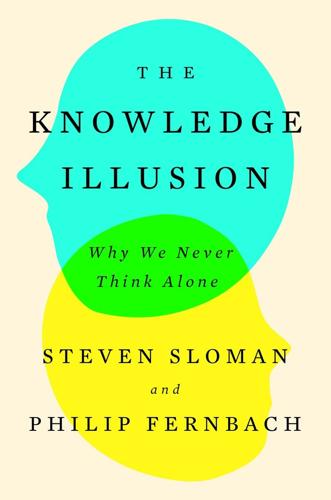
The Knowledge Illusion
by
Steven Sloman
Published 10 Feb 2017
Psychonomic Science 4(1): 123–124. Modus ponens and causal considerations: D. D. Cummins, T. Lubart, O. Alksnis, and R. Rist (1991). “Conditional Reasoning and Causation.” Memory & Cognition 19(3): 274–282. We excel at causal analysis: An introduction to this literature can be found in B. F. Malle and J. Korman (2013). “Attribution Theory.” In ed. D. S. Dunn, Oxford Bibliographies in Psychology. New York: Oxford University Press. Reasoning backward: See, for example, A. Tversky and D. Kahneman (1978). “Causal Schemata in Judgments Under Uncertainty.” Progress in Social Psychology. Hillsdale, NJ: Lawrence Erlbaum. error we make with predictive reasoning: P.
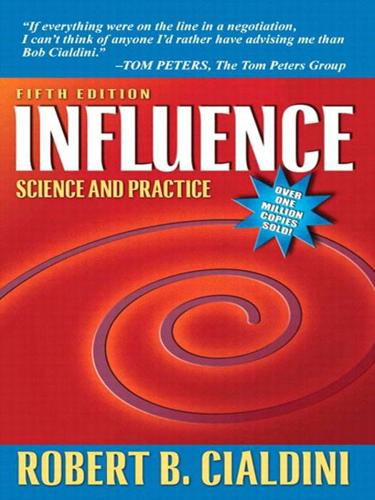
Influence: Science and Practice
by
Robert B. Cialdini
Published 1 Jan 1984
Initial psychiatric findings of recently repatriated prisoners of war. American Journal of Psychiatry, III, 358–363. Sengupta, J., & Johar, G. V. (2001). Contingent effects of anxiety on message elaboration and persuasion. Personality and Social Psychology Bulletin, 27, 139–150. Settle, R. B., & Gordon, L. L. (1974). Attribution theory and advertiser credibility. Journal of Marketing Research, 11, 181–185. Sheldon, K. M., Ryan, R. M., Rawsthorne, L. J., & Ilardi, B. (1997). Trait self and true self, Journal of Personality and Social Psychology, 73, 1380–1393. Shelley, M. K. (1994). Individual differences in lottery evaluation models.